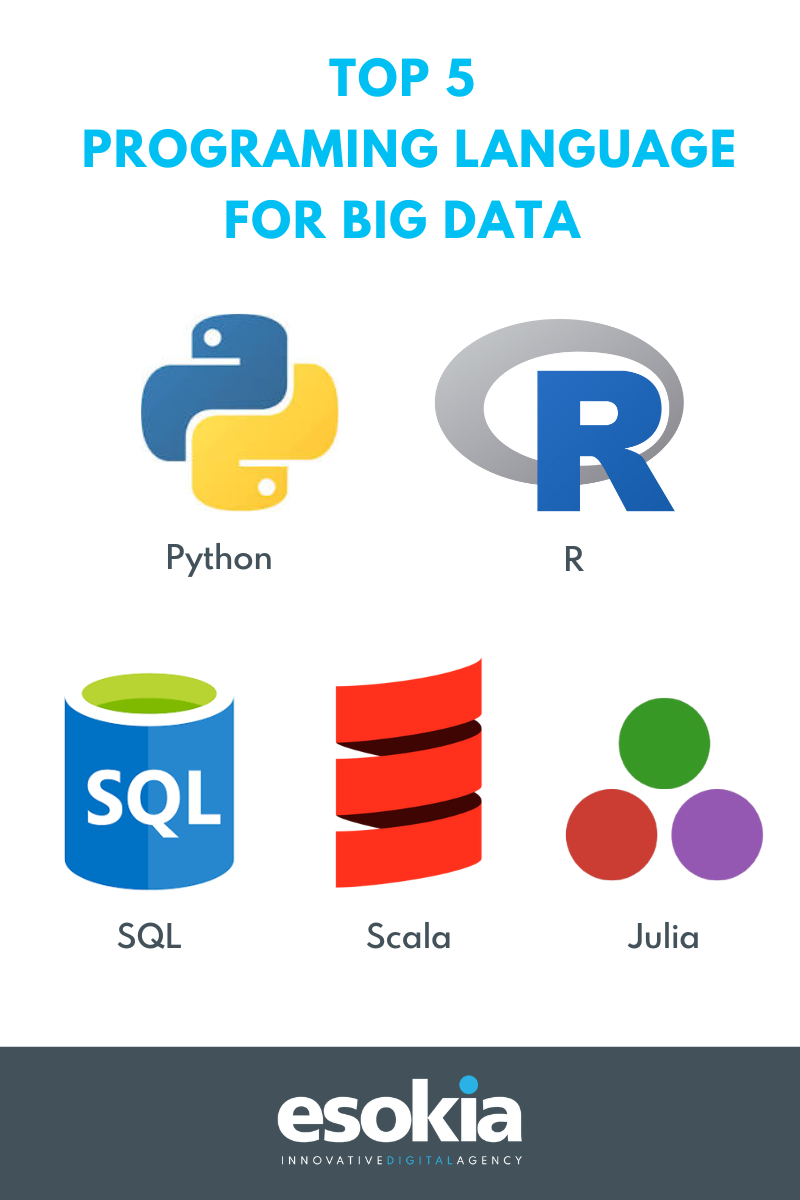
- Framework
How Symfony development & AI transform your web projects ?

Programming languages for Big Data are essential tools in the field of massive data analysis. In a world where the huge amount of data generated every day makes all the difference, choosing the right programming language can make all the difference when it comes to managing, analyzing and exploiting this data.
Big Data refers to the voluminous, varied and complex data that comes from a variety of sources, such as online transactions, social media, connected devices and computer systems. This mass of data poses unique challenges in terms of collection, storage, processing and analysis.
Thus, understanding and leveraging Big Data has become essential for businesses, government institutions and researchers in their quest for new knowledge and technological progress.
Here are the 5 most popular languages in use and their specific advantages for processing massive data.

Python is widely used in data processing because of its versatility, simplicity and robust library ecosystem. Here are just a few of its advantages:
Rich library ecosystem: Python has powerful libraries such as Pandas, NumPy, and scikit-learn, which offer advanced features for manipulating, analyzing and visualizing massive data, making the work of analysts and data scientists much easier.
Ease of learning: Python's clear syntax and readability make it an ideal choice for beginners and those new to data processing. In addition, the Python community is very dynamic, offering a wealth of learning resources such as tutorials, forums and online courses, making it easy to learn and master the language.
2. R
R is a programming language specially designed for statistical and graphical analysis. Its main strengths are
Specialization in data analysis: R is widely used in the field of statistics and data science, thanks to its wealth of features specific to these fields. Key features include advanced statistical methods such as linear regression, classification, clustering and time series analysis.
In addition, R offers exceptional flexibility for data manipulation and transformation, enabling users to perform complex operations such as data cleaning, imputation of missing values, and creation of derived variables.
Extensive set of packages: R has a vast collection of packages dedicated to different data analysis tasks, offering great flexibility for the processing and visualization of massive data.
Scala is a versatile programming language renowned for its efficiency in the distributed processing of massive data, thanks in particular to its tight integration with Apache Spark. Here's what makes Scala so powerful:
Distributed processing: Scala stands out for its ability to handle the distributed processing of massive data, particularly when combined with frameworks such as Apache Spark. This combination makes it possible to efficiently manipulate large datasets on clusters of machines, offering exceptional performance for parallel processing.
SQL is a query language specially designed for querying and manipulating relational databases. Its main advantages are as follows:
Declarative language: SQL is a declarative language that allows users to describe the data they wish to retrieve or manipulate, rather than specifying how to obtain that data. This approach makes SQL intuitive and easy to use for massive data processing operations, allowing users to focus on the desired results rather than the technical details of implementation.
Julia is a relatively new programming language offering high performance for massive data processing. Here are its main advantages:
High performance: Julia is specially designed to deliver optimum performance without compromising on ease of use. Its remarkable execution speed makes it a preferred choice for numerical operations and scientific computing, particularly in the field of massive data processing requiring intensive operations.
In Big Data, where data volumes are massive and processing processes complex, continuous integration and collaboration between team members are essential to ensure that projects run smoothly.
To meet this need, a range of specialized tools are used to automate integration, deployment and testing processes, as well as to facilitate cooperation and coordination between team members.
These tools play a crucial role in the efficient management of Big Data projects, ensuring regular, high-quality delivery of analytical and software solutions.